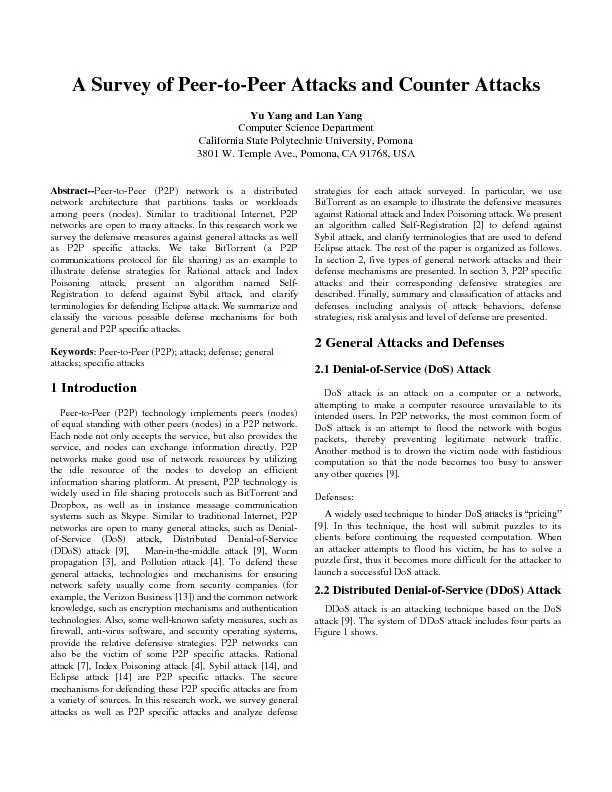PDF-Peer Attacks and Counter Attacks
Author : yoshiko-marsland | Published Date : 2016-05-24
A Survey of P eer to Yu Yang and Lan Yang Computer Science Department California State Polytechnic University Pomona 3801 W Temple Ave Pomona CA 91768 USA Abstract Peer to P eer P
Presentation Embed Code
Download Presentation
Download Presentation The PPT/PDF document "Peer Attacks and Counter Attacks" is the property of its rightful owner. Permission is granted to download and print the materials on this website for personal, non-commercial use only, and to display it on your personal computer provided you do not modify the materials and that you retain all copyright notices contained in the materials. By downloading content from our website, you accept the terms of this agreement.
Peer Attacks and Counter Attacks: Transcript
Download Rules Of Document
"Peer Attacks and Counter Attacks"The content belongs to its owner. You may download and print it for personal use, without modification, and keep all copyright notices. By downloading, you agree to these terms.
Related Documents














